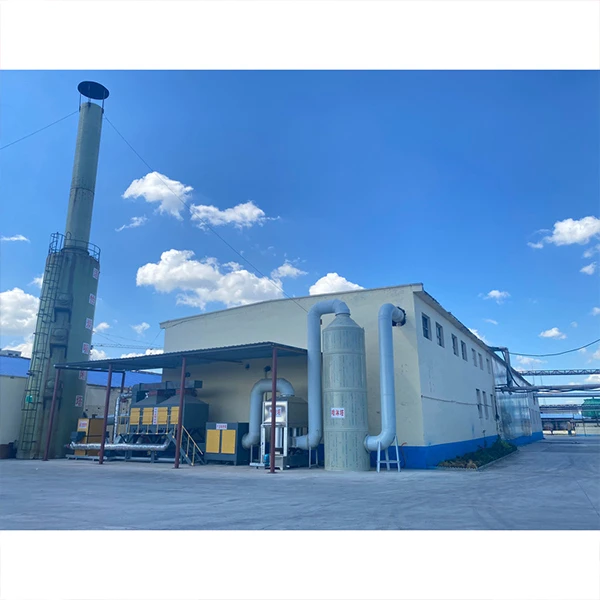The Versatility and Applications of Cellulose Ethers HEC, HEMC, and HPMC
Cellulose ethers are a group of cellulose derivatives that play a significant role in various industries, thanks to their unique properties and wide-ranging applications. Among these, Hydroxyethyl Cellulose (HEC), Hydroxyethyl Methyl Cellulose (HEMC), and Hydroxypropyl Methyl Cellulose (HPMC) stand out as versatile compounds widely utilized in construction, pharmaceuticals, food products, and personal care items. Each of these cellulose ethers possesses distinct characteristics, making them suitable for diverse applications.
Understanding Cellulose Ethers
Cellulose is a naturally occurring polymer found in the cell walls of plants. To enhance its functional properties, cellulose can be chemically modified to create cellulose ethers. This modification alters the solubility, viscosity, and gel-forming capabilities of the polymer, enabling it to serve various purposes. Cellulose ethers are typically non-toxic, biodegradable, and environmentally friendly, contributing to their popularity in multiple sectors.
Hydroxyethyl Cellulose (HEC)
HEC is a non-ionic, water-soluble cellulose ether that is derived from the reaction of alkali-treated cellulose with ethylene oxide. It is primarily used as a thickening agent, stabilizer, and film-forming agent. HEC's excellent water retention and emulsification properties make it particularly valuable in construction applications. It is commonly added to cement and gypsum-based materials to improve their workability and adhesion, as well as to prevent cracking in dried surfaces.
In the pharmaceutical industry, HEC acts as a drug delivery agent due to its capability to create controlled release formulations. Moreover, it is utilized in cosmetics and personal care products where its moisturizing properties help enhance the texture and stability of creams and lotions.
Hydroxyethyl Methyl Cellulose (HEMC)
cellulose ether hec hemc hpmc

Combining the properties of both HEC and methyl cellulose, HEMC offers enhanced performance features. This cellulose ether is primarily used in tile adhesives and joint compounds due to its superior adhesion properties and improved workability. HEMC provides excellent water retention, which is crucial for allowing sufficient time for the curing process of construction materials.
In the food industry, it serves as a thickening and stabilizing agent, helping to maintain the consistency of sauces, dressings, and dairy products. HEMC is also utilized in the development of low-fat food items, where it aids in creating the desired texture without the need for excessive fats.
Hydroxypropyl Methyl Cellulose (HPMC)
HPMC is another widely used cellulose ether known for its exceptional film-forming ability, water solubility, and thermal stability. Its applications range from pharmaceuticals to food and construction. In the pharmaceutical sector, HPMC is used as an excipient in tablet formulations, acting as a binder and controlling the release profile of active ingredients.
In the food industry, HPMC is praised for its ability to improve mouthfeel and texture, making it ideal for food products like low-calorie ice creams and sauces. Additionally, it is commonly found in gluten-free bakery products, aiding in achieving a desirable texture without compromising quality.
In construction, HPMC is employed in a variety of applications, such as tile adhesives, where it enhances the bond strength and workability of mortars and plasters. Its water retention abilities also contribute to the longevity of the materials when exposed to various environmental conditions.
Conclusion
The significance of cellulose ethers, particularly HEC, HEMC, and HPMC, cannot be overstated. Their unique properties make them essential ingredients in a multitude of products across various industries. From enhancing the performance of construction materials to improving the texture and quality of food and cosmetic products, these cellulose derivatives demonstrate remarkable versatility. As industries continue to explore sustainable and efficient ingredient solutions, the demand for cellulose ethers is expected to grow, further solidifying their importance in modern applications. Innovative research and development will likely yield new uses and improvements for these valuable compounds in the years to come.
-
Rdp Powder: Key Considerations for Wholesalers in the Building Materials IndustryNewsJul.08,2025
-
Key Considerations for Wholesalers: Navigating the World of Hpmc - Based ProductsNewsJul.08,2025
-
Hpmc Detergent: Key Considerations for WholesalersNewsJul.08,2025
-
Key Considerations for Wholesalers: China Hpmc For Tile Adhesive, Coating Additives, Concrete Additives, and MoreNewsJul.08,2025
-
Crucial Considerations for Wholesalers: Navigating the World of Construction MaterialsNewsJul.08,2025
-
Key Considerations for Wholesalers Sourcing Additive For Cement, Additive For Concrete, Additive For Putty from Additive Manufacturer Shijiazhuang Gaocheng District Yongfeng Cellulose Co., Ltd.NewsJul.08,2025




